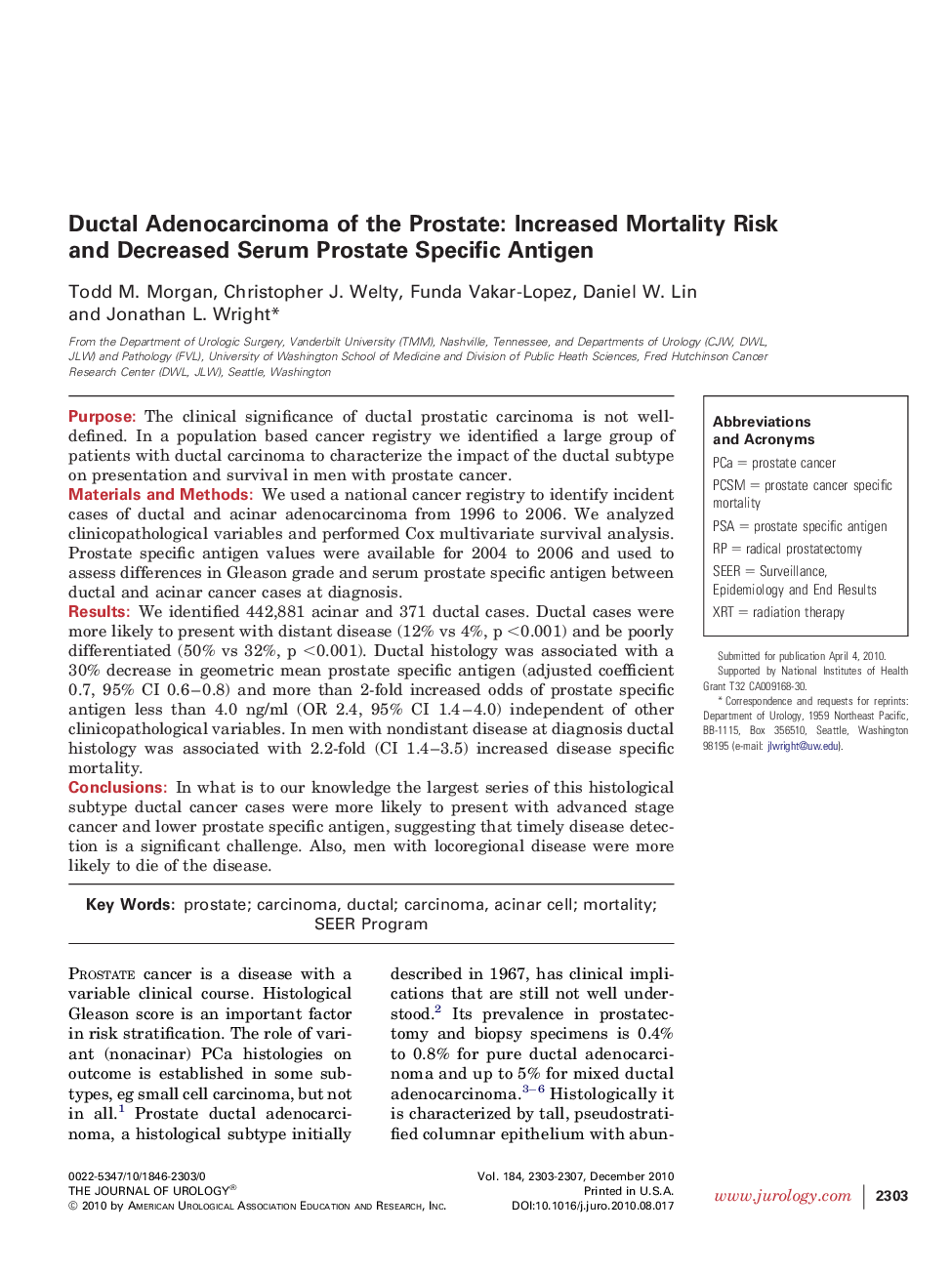| Article ID | Journal | Published Year | Pages | File Type |
|---|---|---|---|---|
| 3872941 | The Journal of Urology | 2010 | 5 Pages |
PurposeThe clinical significance of ductal prostatic carcinoma is not well-defined. In a population based cancer registry we identified a large group of patients with ductal carcinoma to characterize the impact of the ductal subtype on presentation and survival in men with prostate cancer.Materials and MethodsWe used a national cancer registry to identify incident cases of ductal and acinar adenocarcinoma from 1996 to 2006. We analyzed clinicopathological variables and performed Cox multivariate survival analysis. Prostate specific antigen values were available for 2004 to 2006 and used to assess differences in Gleason grade and serum prostate specific antigen between ductal and acinar cancer cases at diagnosis.ResultsWe identified 442,881 acinar and 371 ductal cases. Ductal cases were more likely to present with distant disease (12% vs 4%, p <0.001) and be poorly differentiated (50% vs 32%, p <0.001). Ductal histology was associated with a 30% decrease in geometric mean prostate specific antigen (adjusted coefficient 0.7, 95% CI 0.6–0.8) and more than 2-fold increased odds of prostate specific antigen less than 4.0 ng/ml (OR 2.4, 95% CI 1.4–4.0) independent of other clinicopathological variables. In men with nondistant disease at diagnosis ductal histology was associated with 2.2-fold (CI 1.4–3.5) increased disease specific mortality.ConclusionsIn what is to our knowledge the largest series of this histological subtype ductal cancer cases were more likely to present with advanced stage cancer and lower prostate specific antigen, suggesting that timely disease detection is a significant challenge. Also, men with locoregional disease were more likely to die of the disease.
